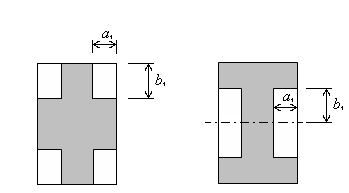Shear Resistance on Skin
The shear resistance on pile skin is in the analysis represented by the stiffness of springs supporting individual pile segments. This stiffness is associated with material parameters of the Winkler-Pasternak model C1 and C2. The values of C1 and C2 are determined from parameter Edef. They depend on the depth of the influence zone, which varies with the pile deformation (settlement). The variability of influence zone is in the analysis determined such that for zero deformation it receives the value of 1x the pile diameter and for deformation at the onset of skin failure equals kx the pile diameter, where k is the specified value, resp. 2.5.
The decisive parameter for the determination of magnitudes of C1 and C2 is the deformation modulus. Caution must be taken when estimating the value of Edef from deformational characteristics of soil using standards. In particular, in case of long piles we are essentially dealing with deep-seated foundations and the soil at the pile heel will certainly experience higher stiffness than that proposed by the standard for spread footings. This holds, particularly for cohesive soils. The most reliable estimates are of course those obtained directly from experimental measurements.
Formulas given below serve to determine the stiffness of springs representing the shear resistance of pile skin as a function of computed parameters of the elastic subsoil. They depend on the shape of cross-section and for the implemented cross-sections they receive the following forms:
Circle:
![]()
where: | r | - | radius of the pile cross-section |
C1, C2 | - | subsoil parameters | |
K1 (αr), K2 (αr) | - | values of the modified Bessel functions |
Parameter α attains the value:

Rectangle:
![]()
where a, b are lengths of rectangle edges and C1, C2 are subsoil parameters and kred is the reduction coefficient, which reduces the stiffness with respect to the slenderness of the rectangle.
It receives the following values:
![]()
![]()
![]()
![]()
where a is the length of a shorter edge of the rectangle and H is the depth of influence zone.
Cross, I-section:
For these cross-sections the stiffness is derived from the stiffness of the rectangular cross-section reduced by subtracting the stiffness corresponding to four "removed" parts of the cross-section.
![]()
a1, b1 - evident from the following figure
